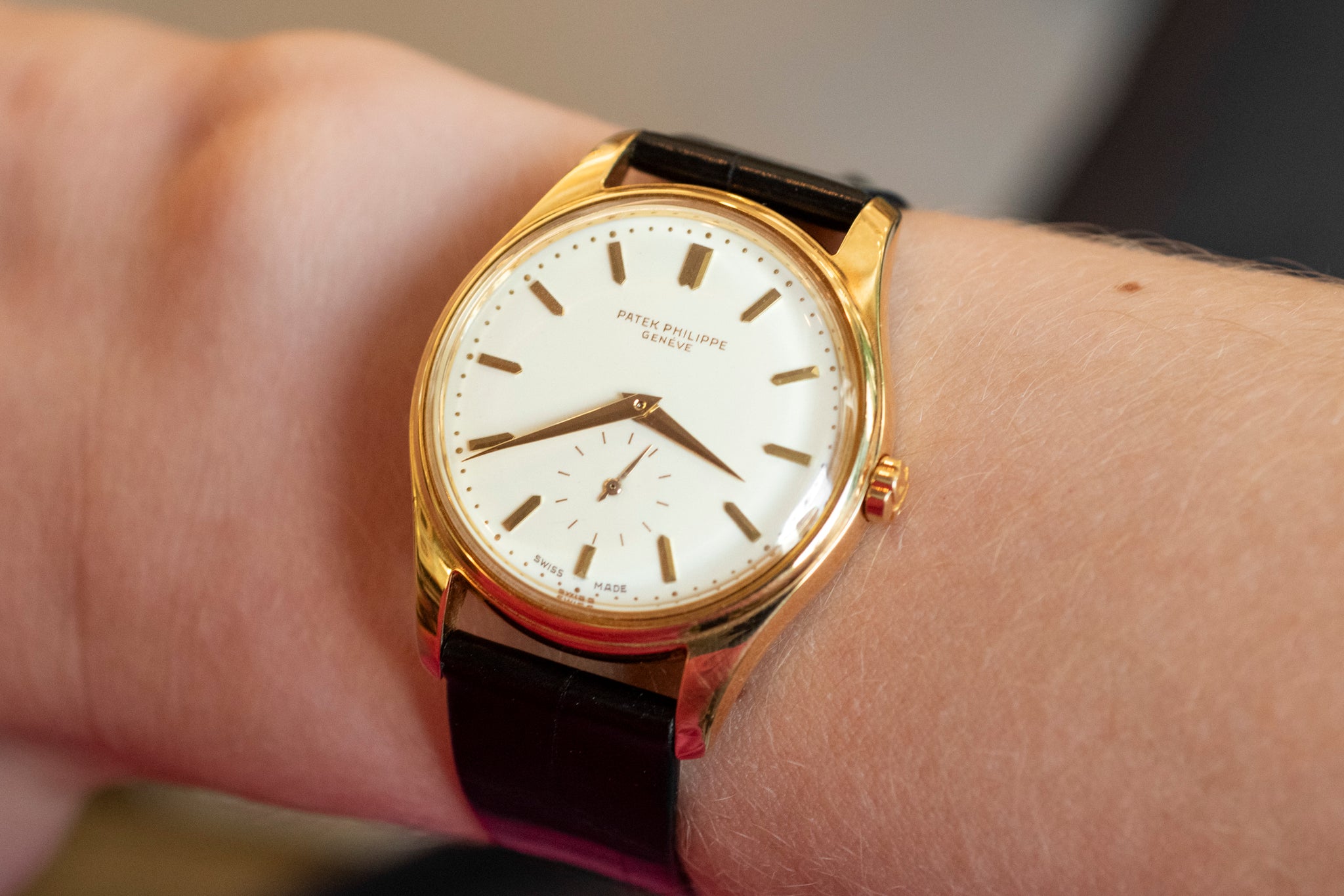Patek Philippe’s legacy in mechanical watchmaking is second to none. Over the decades, it has introduced dozens of groundbreaking references—each pushing the boundaries of design and innovation. For some references, the significance is self-explanatory: a split seconds chronograph movement, perpetual calendar chronograph, tourbillon, or minute repeater is inherently a complex creation of noteworthy status. In other cases, some of the most unassuming creations obscure the richest stories. This is certainly the case with the Calatrava Reference 2526— a simple watch on the wrist, but one of the most important timepieces in the world of vintage watches.

Patek 2526 First Series Dial
Launched in 1953, the 2526 was among the very first automatic Patek Philippes—if not the very first. The brilliant model housed the revolutionary caliber 12-600AT—Patek’s answer to Rolex’s central rotor automatic movement, which had debuted two decades earlier in 1931. Rolex’s patent on the central rotor gave Patek 20 years to perfect its own approach to the new movement technology. Patek used that time wisely, generating the Calibre 12-600AT, which blew away Rolex’s movement from a technical standpoint. Accurate to +/- 1 second per day according to Patek, this movement was startlingly accurate for the time and even by modern standards. This movement utilized a Gyromax balance which exploits adjustable weights around the perimeter of the wheel that, in tandem with a swans-neck regulator, allow the watchmaker to fine tune the accuracy of the watch.

Beautiful Patek 2526 Dial Enameling
The movement, while significant, tells only half the story. The dial of the 2526 is equally legendary. Made from baked enamel, it has a creamy, almost three-dimensional texture that’s unmistakable. Enamel is essentially like a glass surface, with an extremely high rejection rate in manufacture due to imperfections, defects, and cracks that often form in the dial surface. The same fragility renders flawless examples from the 50s and 60s incredibly rare and valuable. To compound this rarity, in the 1950s, Patek’s production volume was a fraction of what it is today. Enamel is a double edged sword— likely the most beautiful of dial materials, and also perhaps the most fragile. Properly cared for and maintained, clean 2526 examples with intact dials are priceless.

The other striking feature of this watch is its size. For a 1950s release, this watch was a startlingly large 36mm. For context, the majority of men’s wrist watches in the period were in the 31-33mm size convention. The Reference 96, for example, measured a svelte 31.5mm. Thus, this watch reflected a model that was incredibly modernist on all ends. It was an automatic winding watch— a rarity for the time. But that was simply an internal refinement. Externally, the watch had a big presence. This almost sporty appeal is paired with practical capability in the form of a screw-down caseback, yielding legitimate water resistance. This was also a departure for Patek who almost always used snap backs on their Calatravas.
More broadly, the case shape of the 2526 was a modernized, flowing profile that was far more fluid than that of the Calatrava references released before it. Whereas the 96, 570, and others had sharp lugs, the 2526, swollen slightly by its movement, had a much more rounded pebble look to it, even as it continued to represent and honor the traditional backdrop upon which it was built within the collection. The dial’s layout, faceted indexes, distinctive dauphine handset, typeface, and more, all reflected the tradition of the Calatrava collection characteristically.

Patek Philippe Ref. 2526 'Double P' Signed Crown
Perhaps the ultimate signature memorializing this watch’s impact was the double signed ‘P’ crown. First placed in pair with this movement, this crown proudly indicated that there was something special contained within the 36mm confines of this case. In a modern context, the double P has become one of the most beloved details of vintage automatic Pateks.

Patek Reference 2526 Pair
The legacy of the Patek Philippe 2526 lies not in bold complications or flashy gemsetting, but in its quiet historical and tangible significance. It was the watch that introduced automatic precision to Patek’s storied lineage—wrapped in a case of ahead-of-its-time proportions and crowned with one of the most beautiful enamel dials ever made. More than merely a technical achievement, the 2526 is a symbol of restraint, refinement, and the enduring value of Patek’s design language. In many respects the 2526 marked the beginning of a new era in Swiss watchmaking, setting a standard for quiet innovation that still substantially affects Patek’s modern lineup. It’s a piece that reminds us that sometimes, quiet excellence leaves the loudest legacy.












